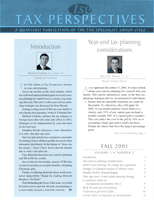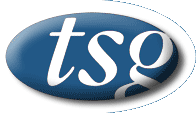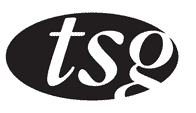
PDF Format
 Issue Contents Issue Contents
 All Issues All Issues
Fall 2001
Volume 1, Number 2
The information in Tax Perspectives is prepared for general interest only. Every effort has been made to ensure that the contents are accurate. However, professional advice should always be obtained before acting and TSG member firms cannot assume any liability for persons who act on the basis of information contained herein without professional advice.
SR&ED and Year-End Planning
It is important for tax and business reasons to always conduct a certain level of year-end planning and review. Claims filed under the scientific research and experimental development (SR & ED) provisions of the Income Tax Act are no different. This article, like SR & ED, is divided into technical and financial areas.
TECHNICAL AREA
From the technical point of view, the most important consideration is to compile completed activity descriptions. However, time sheets, contractors' statements of work, and prototype information are also worth reviewing for material to document research projects.
Activity descriptions
In most companies, activity descriptions must be drawn from the technical staff. Ideally, the activity descriptions should be written in real time, as the activities occur. It is difficult to write comprehensive descriptions at or after the end of the year. Both the technical achievement sought and the technical uncertainty involved should be written at the beginning of the activity. Research steps can be written at the end of the activity, in the past tense, to show what actually occurred. A review at the end of the year and at the end of the activity will ensure that the technical staff remember these considerations. A further goal of a year-end review is to look for activities that logically should have occurred but that have not yet been documented.
Time sheets
It is important that the technical staff prepare ongoing time sheets. A year-end review of time sheets from all researchers is an essential part of the research expenditure documentation. A research file supported with time sheets will successfully withstand CCRA review.
There are two aspects to the time sheet: its existence and its reasonable completion. Existence should be reviewed as a clerical function, either throughout the year or at year-end, but reasonable completion should be reviewed by a senior person who knows what has happened and what should have happened in the research department. Additional SR & ED activities may be discovered from this review.
Contractors
It is common for corporations to engage third-party contractors to assist with the research endeavour. Before year-end, it is important to find either the statement of work or the legal contract with the subcontractor to prove its relationship to the research activity. It is critical to ensure that the corporation has the right to exploit the results of the work from the contractor, and that the contractor will not make a claim for SR & ED on its own behalf for the same money.
Prototypes
To remove technological uncertainty, prototypes are often constructed during the R&D process. Materials are often destroyed and discarded as the prototype takes shape. Most corporations know the cost of the final prototype, but the essential cost is that of the materials destroyed and discarded throughout the year. At year-end, it is still possible to recreate these costs. Later, it is often impossible.
FINANCIAL AREA
From the financial point of view, there are several considerations in a year-end review. These include the 180-day payment rule, the accrual of government assistance, and salary planning for specified shareholders.
Payables
If an R&D expenditure has been accrued as a payable during the fiscal year, the amount must be paid within 180 days after year-end for the corporation to obtain the investment tax credit for that taxation year. The amount is eligible for the deduction, but not the investment tax credit if it fails this test. A year-end review of amounts that may fail this test would obviously be of benefit.
Receivables
The corporation may be eligible to receive government assistance under, for example, the Industrial Research Assistance Program (IRAP). It is essential that amounts expected to be received are netted against expenditures for the year in which the expenditures are made. A yearend look at receivables under the program will verify that this calculation is correct.
Specified shareholders
A significant planning opportunity is available for Canadian-controlled private corporations (CCPCs) with specified shareholders who are involved in the research program. To take advantage of this opportunity requires a look at salary levels before year-end.
Specified shareholders are those who own more than 10% of the stock of the corporation. The amount of the research deduction available for such employees is limited to five times the maximum pensionable earnings under the Canada Pension Plan for that year. In 2001, this amount is $38,300. Therefore, a specified shareholder involved 100% in the research program could have a- salary of almost $200,000 and have this amount fully eligible for research deductions and investment tax credits. As a result, it is important to ensure that the employee is paid sufficiently to take advantage of this provision.
A critical part of this plan is to remember that bonuses are not eligible for SR & ED. Further, the proxy calculation for a specified shareholder is limited to the least of three calculations: 75% of total wages, 21/2 times the yearly maximum pension earnings, and the actual research apportionment of the salary. This calculation also leaves out any bonuses received by this individual.
Therefore, the salary levels of CCPC shareholders should be carefully considered. The standard policy of receiving a small salary and a large bonus when money is available should no longer be followed.
Taxable income level
The SR & ED rate is reduced from 35% to 20% and is not refundable if taxable income exceeds $200,000 in the prior year. This can happen unwittingly for three main reasons:
- The salary of a related shareholder is not paid within 180 days of year-end, and is therefore not allowed as a deduction until the year in which it is paid.
- Taxable income is set just below $200,000, and a small income adjustment (for example, disallowed entertainment) pushes income over $200,000.
- The taxable income of associated corporations is not taken into account.
Subject to the comments on bonuses and eligibility for SR & ED, the time to set the bonus level is at year-end. At the same time, it is a good idea to make plans for payment of the bonus so that this is not overlooked.
CONCLUSION
Year-end planning means current, real-time involvement in the SR & ED documentation system. This will result in an optimal claim and fewer concerns when CCRA reviews the tax credit request.
| 



